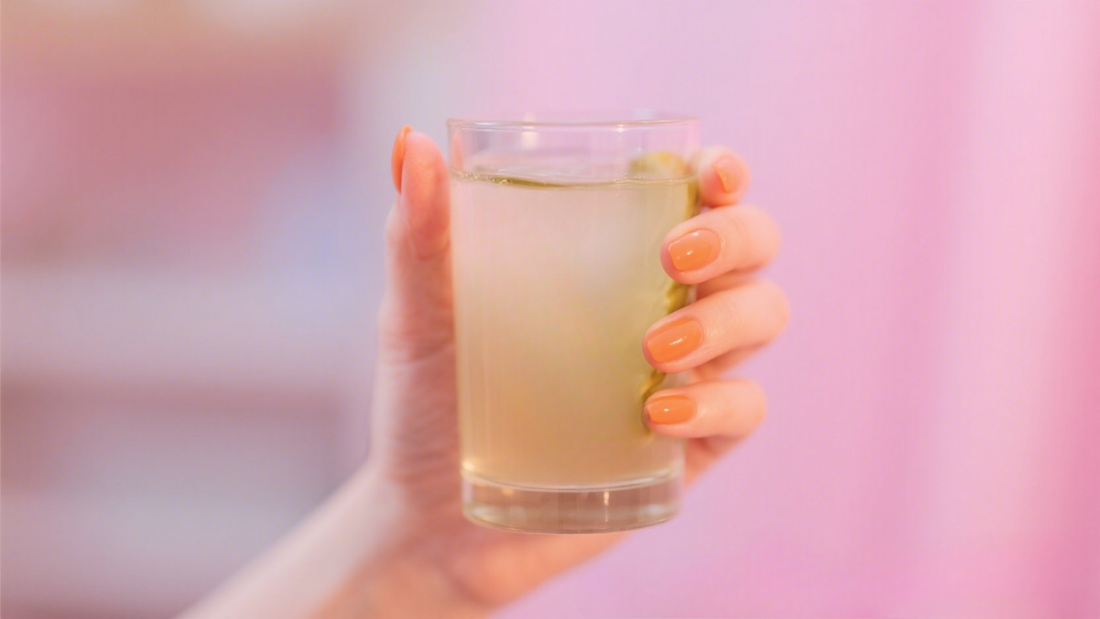
Why Pickle Juice Might Help with Period Pain Relief
Share
Natural Period Relief: What Pickle Juice Can and Can’t Do
Many people searching for natural relief during their period ask the same question: Does pickle juice help with period cramps? This tangy, salty liquid has long been used by athletes for muscle cramps, and it’s now gaining attention for menstrual pain too. Here’s what current research says, how it may help, and what to keep in mind if you’re thinking about trying it.
What Causes Period Cramps in the First Place?
Menstrual cramps, also known as dysmenorrhea, are the result of the uterus contracting to expel its lining. These contractions are triggered by prostaglandins, chemicals that also cause pain and inflammation. The more prostaglandins your body produces, the worse the cramping. According to the American College of Obstetricians and Gynecologists (ACOG), menstrual cramps have affected as many as 90% of menstruating women at some point. Typical symptoms are lower abdominal cramping, lower backache, nausea, gastrointestinal changes, and fatigue.

Why Do People Use Pickle Juice for Period Cramps?
Pickle juice is rich in sodium and potassium electrolytes, trace vinegar, and acidic compounds that may enhance hydration and muscle recovery. It became popular among athletes following a study in Medicine & Science in Sports & Exercise published in 2010 that indicated drinking 1 oz of pickle juice was 45% better than drinking water at easing muscle cramps. The alleviation seems to have something to do with the way acidic compounds within pickle juice trigger nerve impulses in the throat and mouth that instruct muscles to relax when they're spasming. Although the research study was conducted on skeletal muscle cramps, some opine that the neurological response might also decrease cramping due to uterine contractions.
Can Pickle Juice Actually Help With Menstrual Pain?
Although there is no clinical trial for menstrual cramps and pickle juice, a number of reasons would lead one to believe that it would help some individuals. First of all, pickle juice contains sodium and potassium, which are used to stop dehydration and muscle spasms. If your cramps are intensified by fluid loss, diarrhea, or bloating in the days preceding your period, a bit of pickle juice can reboot your system. Second, vinegar and acidity could cut off pain signals and cramping cycles, similar to their effect on exercise cramps. Third, some people attest that it dulls nausea or menstrual belly pain, though this is anecdotal and not uniform across people.
How Should You Use Pickle Juice During Your Period?
If you are thinking of using pickle juice to ease period cramps, try 1 to 2 tablespoons and wait 5 to 10 minutes, and observe how your body reacts. Drink cold water because it will be more comforting. Don't overdo it—too much sodium will lead to water retention or bloating, which will increase discomfort. Choose natural, fermented pickle juice that is not artificially colored or preserved. A healthcare provider should be consulted at all times if you have high blood pressure or a condition that requires limitation of sodium.
You can also benefit from ingredients derived from pickle juice without the pungent vinegar flavor or salt. PumPums Menstrual Relief Gummies feature Organic Apple Cider Vinegar and our exclusive Pickle+ Blend, both intended to provide natural cramp relief, hydration, and hormone balance.

Is Pickle Juice Safe to Drink on Your Period?
Moderation is fine for most. Drink responsibly—do not substitute for meals or hydration, and do not overdo it to prevent bloat from excess sodium. Individuals with heart conditions, kidney disease, or GERD do not need to use pickle juice without first consulting a doctor. In addition, it is a low-risk intervention to include as part of an overall natural period care practice.
Are There Scientific Studies Supporting Pickle Juice for Cramps?
The most compelling evidence is provided by sports science. The earlier 2010 study showed how pickle juice could ease muscle cramps by inhibiting nerve impulses, rather than in response to correcting electrolyte balance. The Journal of Pain Research review (2013) also sensed the nervous system involvement with muscle cramps and pain perception. Even though these studies do not reference menstrual cramps, they imply that the same neural pathway is implicated.
You can also learn more about natural cramp remedies on the PumPums Blog, where we demystify wellness advice, cycle-friendly tips, and the science of clean, plant-based ingredients.
What Are Other Natural Ways to Relieve Period Cramps?
If pickle juice is not your go-to, there are a few other rigorously researched, natural alternatives that may ease period pain:
Apply heat therapy: A 2012 review discovered that heating pads were as good as ibuprofen for moderate cramps.
Eat magnesium-rich foods: Pumpkin seeds, spinach, and bananas can calm the muscles.
Herbal teas: Ginger tea and peppermint tea calm the stomach and lower inflammation.
Light exercising: Exercise increases blood flow and can lower the intensity of cramps.
Eliminate inflammatory foods: Load up on omega-3s, leafy greens, and antioxidant fruits.
Pantry raid? Take a look at our Period Relief Recipes page's Cramp-Calming Ginger Peppermint Tea. It is easy to make and naturally helpful during your cycle.
Should You Try Pickle Juice for Period Cramps?
Pickle juice is not for everyone, and it's not a cure, but it might be able to take some of the symptoms off for the cramping, nauseous, dehydrated, sensitive person during their period. Should you be searching for a natural one, it is safe to use in moderation. For a simpler, more concentrated one, PumPums Menstrual Relief Gummies provide relief from cramps, supported by ACV and Pickle+ Blend, without the brine and sodium overload.
Learn more about feeling your best, naturally, by reading the PumPums Blog or trying a plant-based recipe from our Period Relief Recipes series.



